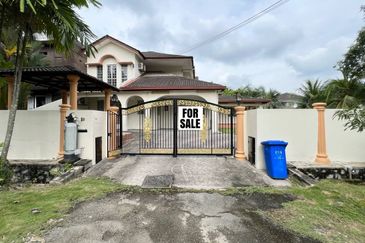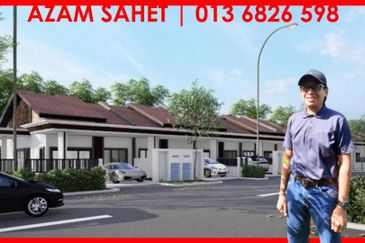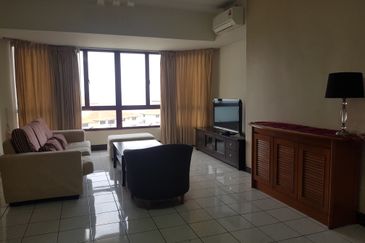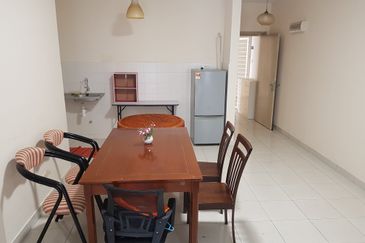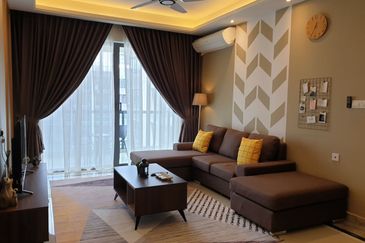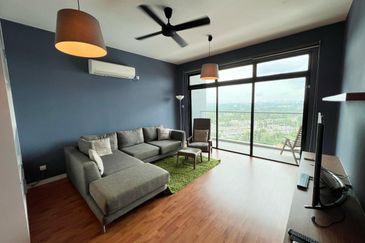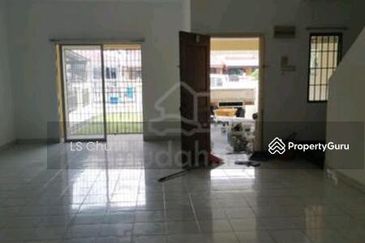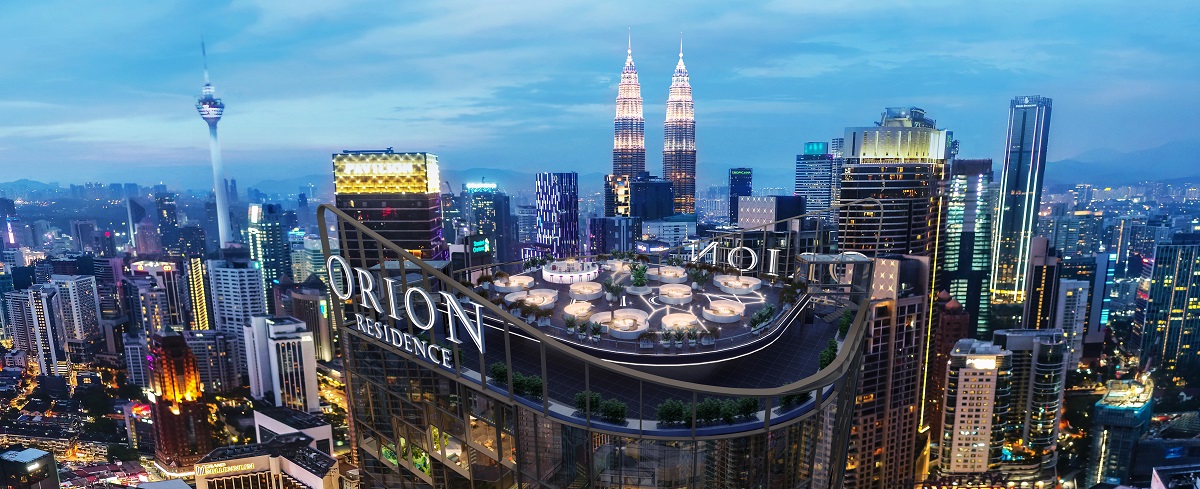For almost four decades, the Urban Development Authority, or UDA, has been the government’s flagship vehicle for the redevelopment of cities and towns in the country. Set up by the federal government in 1971, the national property development agency’s mission was to launch and undertake various urban development projects.
UDA was incorporated in 1996 and became UDA Holdings Sdn Bhd. It was then listed on the Kuala Lumpur Stock Exchange in 1999 as UDA Holdings Bhd. The company was delisted in 2007. Although it was “the” urban development agency in its early years, UDA has faded into the background, especially with the rise of other government-linked developers.
Even though the company appears content to go about its business without much fanfare, it is still a key player in the property sector. With an 850-acre landbank in strategic locations across the country and with plans to further expand it, UDA is currently involved in projects in Kuala Lumpur, Johor, Melaka, Terengganu, Penang and Kuantan in Pahang.
UDA has recently reasserted itself into the public consciousness with its involvement in several key projects in the Klang Valley. For example, any mention of UDA will lead many to associate it with the Puduraya bus terminal right in the heart of Kuala Lumpur. UDA is the property manager of the city’s bus transport hub and is in the midst of upgrading the busy terminal.
The company is also involved in high-end developments, such as Sinaran TTDI in Taman Tun Dr Ismail, Kuala Lumpur, as well as Gaya Bangsar in the city’s ever-popular Bangsar surburb. You may also have noticed a new showhouse next to Sheraton Imperial Hotel Kuala Lumpur, which is UDA’s proposed development of offices and high-rise residences.
UDA owns and manages three hotels — Ancasa Hotel Kuala Lumpur (previously Impiana Hotel Kuala Lumpur, located beside Puduraya), Ancasa All Suites Resort & Spa in Port Dickson and Jerejak Resort & Spa in Penang.
 It was rather challenging to pin down the man behind UDA for this interview, but managing director Datuk Jaafar Abu Hassan spoke to City & Country recently about what’s been happening with the developer, the status of its ongoing projects and his vision for UDA, which now comes under the Ministry of Finance.
It was rather challenging to pin down the man behind UDA for this interview, but managing director Datuk Jaafar Abu Hassan spoke to City & Country recently about what’s been happening with the developer, the status of its ongoing projects and his vision for UDA, which now comes under the Ministry of Finance.
UDA was previously under the Ministry of Entrepreneur and Cooperative Development. In line with the ministry’s purpose and objectives, UDA’s role was to assist in developing bumiputera entrepreneurs. The developer was placed under the Ministry of Finance in the recent cabinet reshuffle on April 8 by new Prime Minister Datuk Seri Najib Razak. According to Jaafar, UDA has ongoing projects with a total gross development value (GDV) of RM1.7 billion in 2008.
Development back on track
Jaafar says its high-end project in Taman Tun Dr Ismail, Sinaran TTDI, commenced construction works in April 2009. Sinaran TTDI sits on a 2.3-acre freehold site, comprising a 25-storey residential tower with 249 units. Unit sizes range from 1,128 sq ft for the 2-bedroom units to 5,156 sq ft for four-plus-one bedroom units. There are also four 5-bedroom penthouses with built-ups of over 5,000 sq ft. The project has a GDV of RM160 million, with units going for between RM387,000 and RM1.5 million during its launch.
Although response has been good, with the project fully sold within nine months of its launch in July 2006, the company has not been immune to the turmoil in the global economy. Development had to be delayed due to the increase in prices of materials such as oil and steel.
“We were caught in a critical timeframe. We carried out tenders and the prices submitted to us were tremendously high. Now, we are pleased to announce that the contract was awarded in April this year and construction has reached its first floor level. We are still upbeat on the project. Sinaran TTDI is now expected to be completed by April 2011,” he says. It was originally supposed to be completed in 2010.
For many months, some purchasers of Sinaran TTDI had been wondering when construction would start. What had seemed like a “sure win” development in the prime and mature Taman Tun Dr Ismail area was starting to become a source of worry for the buyers.
A purchaser, who prefers to remain anonymous, bought a 2-bedroom unit with his fiancée almost three years ago. “I was getting worried as nothing was going on each time we passed the site. I work in Petaling Jaya and chose Taman Tun because of its location,” he says. He hopes no more delays will occur as he has been staying with his family while waiting for his unit to be completed.
Jaafar, however, took the opportunity to allay the fears of the purchasers. “I would like to stress that there has never been any abandoned UDA projects. In fact, we have taken over abandoned projects, like the one in Penang. As for Sinaran TTDI, there has not been any cancellations, whether by individuals or groups. We also send status letters to purchasers periodically,” he says, adding that most of the buyers are from Taman Tun Dr Ismail.
Jaafar also says the company has yet to decide whether the six 5-storey shops that are part of Sinaran TTDI will be sold or kept for recurring income. “Interested investors have approached us but we will decide later. The message we want to convey is that UDA is fully committed and will always deliver high quality as promised,” he adds.
As for UDA’s second high-end project, Gaya Bangsar, which was launched in January 2008, Jaafar says it is on schedule and will be completed by March or April 2011. The development, which is located on Jalan Maarof and next to Dataran Maybank, is a 34-storey condominium block that comprises 285 units.
Gaya Bangsar has studio units as well as 1-bedroom to 3+1 bedroom units, with built-ups ranging from 671 to 1,610 sq ft. It was fully sold within weeks of its launch. The development has a GDV of RM159 million, with prices ranging from RM350,000 to almost RM900,000.
 Puduraya upgrade
Puduraya upgrade
It was reported recently that southbound transport services will be moved to the RM570 million Bandar Tasik Selatan bus terminal in Cheras, scheduled to be completed in November next year. Puduraya currently handles southbound and northbound express services as well as city bus services. The government has approved the spending of RM30 million on the upgrading of the terminal.
Jaafar says this will be carried out in three phases. Phase one, which started end-May, will focus mainly on improving air circulation and the waiting area. Phase two will be for relocation of the food court to the upper level to create more space for waiting. The last phase will consist of a new retail area. Ticket counters will be relocated to the upper level as well to make way for a bigger waiting area.
“Two major issues at Puduraya are the traffic jams as well as the comfort level for users. The building is over 28 years old and it is taking in over four times its intended capacity, with more than 1,000 buses on a daily basis. On normal weekends, there are about 1,300 buses and between 70,000 and 80,000 users in Puduraya,” he says.
Jaafar expects the upgrading works to be completed by 2011. The developer is also taking into consideration the needs of the disabled by adding escalators and “walkalators”, and creating a bigger and more comfortable waiting area. No additional levels will be added to the existing building, he adds.
Commenting on reports some two years ago that the developer would acquire stalled neighbouring project, Plaza Rakyat, to house the new Puduraya terminal, Jaafar says UDA had no plans to do so.
Pudu Prison next?
Next on UDA’s list is the much-anticipated redevelopment plans for the 19-acre site that is the former Pudu Prison. “We have carried out soil investigations and site studies and have submitted our principal plan to Dewan Bandaraya Kuala Lumpur. We have been approached many times for a proposed joint venture for the development,” he adds.
Jaafar is unable to reveal much information on the development as he is waiting to brief the Ministry of Finance on the project before the plans are unveiled to the public. He does mention, however, that it will be a mixed development and expects physical development works to commence either in 2Q2010 or 3Q2010, subject to market conditions then.
Another prime site owned by UDA is the 4.5-acre tract located beside Sheraton Imperial Kuala Lumpur Hotel on Jalan Sultan Ismail. Jaafar says the show gallery for the mixed development project is up, and over 200 prospective buyers have registered so far. “We will revisit the project sometime in October this year and decide if we will launch it then,” he says.
According to Jaafar, indicative prices for the condominiums are more than RM700 psf. Earlier plans for the development include a condominium block, two office towers and retail outlets for a GDV of over RM300 million.
In Melaka, UDA will be developing a 4-storey street mall on a site located between Jalan Tun Ali and Jalan Tun Mamat. The mall with over 300,000 sq ft gross area will sit on a 2.4-acre site. With a GDV of RM100 million (excluding land cost), the mall will have different components, including a piazza, waterfront promenade, clock tower and historical trail. The development will also feature boutique retail outlets, a hotel, art gallery, mini museum, food court, mini library, surau, stalls and playground, including a water park on the top floor of the mall. Jaafar expects construction works to begin by 4Q2009. A self-confessed “Melaka boy”, Jaafar says this will be the first open street mall in the state.
Changing perceptions
Given that UDA was established at about the same time the controversial New Economic Policy (NEP) was formulated, the developer has, rightly or wrongly, acquired a reputation as the development agency catering primarily to the interest of bumiputeras. Jaafar says he would like to change public perception about UDA, stressing that it is a “non-biased developer”.
“In fact, for our Sinaran TTDI, about 50% to 60% of the buyers are ‘non-bumi’, so it proves that the public has confidence in us and UDA does not build residences solely for bumiputeras,” he says. He believes property is all about having the right products as there will always be upgraders and housing needs.
Going forward, he says UDA will focus on its core activities, namely property development and property management. In the Klang Valley, it still has some undeveloped tracts in Hulu Langat, Selangor, a small pocket next to the site of Gaya Bangsar and in some parts of Bandar Tun Hussein Onn.
“We survive on our own funding and no gearing, except for some government loans. We will continue to be discerning and cautious in the projects we get involved in. We may have some joint ventures with either state governments and government-linked agencies to maximise land potential, given the current land prices,” he concludes.
This article appeared in City & Country, the property pullout of The Edge Malaysia, Issue 760, June 22 - 28, 2009.
UDA was incorporated in 1996 and became UDA Holdings Sdn Bhd. It was then listed on the Kuala Lumpur Stock Exchange in 1999 as UDA Holdings Bhd. The company was delisted in 2007. Although it was “the” urban development agency in its early years, UDA has faded into the background, especially with the rise of other government-linked developers.
Even though the company appears content to go about its business without much fanfare, it is still a key player in the property sector. With an 850-acre landbank in strategic locations across the country and with plans to further expand it, UDA is currently involved in projects in Kuala Lumpur, Johor, Melaka, Terengganu, Penang and Kuantan in Pahang.
UDA has recently reasserted itself into the public consciousness with its involvement in several key projects in the Klang Valley. For example, any mention of UDA will lead many to associate it with the Puduraya bus terminal right in the heart of Kuala Lumpur. UDA is the property manager of the city’s bus transport hub and is in the midst of upgrading the busy terminal.
The company is also involved in high-end developments, such as Sinaran TTDI in Taman Tun Dr Ismail, Kuala Lumpur, as well as Gaya Bangsar in the city’s ever-popular Bangsar surburb. You may also have noticed a new showhouse next to Sheraton Imperial Hotel Kuala Lumpur, which is UDA’s proposed development of offices and high-rise residences.
UDA owns and manages three hotels — Ancasa Hotel Kuala Lumpur (previously Impiana Hotel Kuala Lumpur, located beside Puduraya), Ancasa All Suites Resort & Spa in Port Dickson and Jerejak Resort & Spa in Penang.
 It was rather challenging to pin down the man behind UDA for this interview, but managing director Datuk Jaafar Abu Hassan spoke to City & Country recently about what’s been happening with the developer, the status of its ongoing projects and his vision for UDA, which now comes under the Ministry of Finance.
It was rather challenging to pin down the man behind UDA for this interview, but managing director Datuk Jaafar Abu Hassan spoke to City & Country recently about what’s been happening with the developer, the status of its ongoing projects and his vision for UDA, which now comes under the Ministry of Finance. UDA was previously under the Ministry of Entrepreneur and Cooperative Development. In line with the ministry’s purpose and objectives, UDA’s role was to assist in developing bumiputera entrepreneurs. The developer was placed under the Ministry of Finance in the recent cabinet reshuffle on April 8 by new Prime Minister Datuk Seri Najib Razak. According to Jaafar, UDA has ongoing projects with a total gross development value (GDV) of RM1.7 billion in 2008.
Development back on track
Jaafar says its high-end project in Taman Tun Dr Ismail, Sinaran TTDI, commenced construction works in April 2009. Sinaran TTDI sits on a 2.3-acre freehold site, comprising a 25-storey residential tower with 249 units. Unit sizes range from 1,128 sq ft for the 2-bedroom units to 5,156 sq ft for four-plus-one bedroom units. There are also four 5-bedroom penthouses with built-ups of over 5,000 sq ft. The project has a GDV of RM160 million, with units going for between RM387,000 and RM1.5 million during its launch.
Although response has been good, with the project fully sold within nine months of its launch in July 2006, the company has not been immune to the turmoil in the global economy. Development had to be delayed due to the increase in prices of materials such as oil and steel.
“We were caught in a critical timeframe. We carried out tenders and the prices submitted to us were tremendously high. Now, we are pleased to announce that the contract was awarded in April this year and construction has reached its first floor level. We are still upbeat on the project. Sinaran TTDI is now expected to be completed by April 2011,” he says. It was originally supposed to be completed in 2010.
For many months, some purchasers of Sinaran TTDI had been wondering when construction would start. What had seemed like a “sure win” development in the prime and mature Taman Tun Dr Ismail area was starting to become a source of worry for the buyers.
A purchaser, who prefers to remain anonymous, bought a 2-bedroom unit with his fiancée almost three years ago. “I was getting worried as nothing was going on each time we passed the site. I work in Petaling Jaya and chose Taman Tun because of its location,” he says. He hopes no more delays will occur as he has been staying with his family while waiting for his unit to be completed.
Jaafar, however, took the opportunity to allay the fears of the purchasers. “I would like to stress that there has never been any abandoned UDA projects. In fact, we have taken over abandoned projects, like the one in Penang. As for Sinaran TTDI, there has not been any cancellations, whether by individuals or groups. We also send status letters to purchasers periodically,” he says, adding that most of the buyers are from Taman Tun Dr Ismail.
Jaafar also says the company has yet to decide whether the six 5-storey shops that are part of Sinaran TTDI will be sold or kept for recurring income. “Interested investors have approached us but we will decide later. The message we want to convey is that UDA is fully committed and will always deliver high quality as promised,” he adds.
As for UDA’s second high-end project, Gaya Bangsar, which was launched in January 2008, Jaafar says it is on schedule and will be completed by March or April 2011. The development, which is located on Jalan Maarof and next to Dataran Maybank, is a 34-storey condominium block that comprises 285 units.
Gaya Bangsar has studio units as well as 1-bedroom to 3+1 bedroom units, with built-ups ranging from 671 to 1,610 sq ft. It was fully sold within weeks of its launch. The development has a GDV of RM159 million, with prices ranging from RM350,000 to almost RM900,000.
 Puduraya upgrade
Puduraya upgradeIt was reported recently that southbound transport services will be moved to the RM570 million Bandar Tasik Selatan bus terminal in Cheras, scheduled to be completed in November next year. Puduraya currently handles southbound and northbound express services as well as city bus services. The government has approved the spending of RM30 million on the upgrading of the terminal.
Jaafar says this will be carried out in three phases. Phase one, which started end-May, will focus mainly on improving air circulation and the waiting area. Phase two will be for relocation of the food court to the upper level to create more space for waiting. The last phase will consist of a new retail area. Ticket counters will be relocated to the upper level as well to make way for a bigger waiting area.
“Two major issues at Puduraya are the traffic jams as well as the comfort level for users. The building is over 28 years old and it is taking in over four times its intended capacity, with more than 1,000 buses on a daily basis. On normal weekends, there are about 1,300 buses and between 70,000 and 80,000 users in Puduraya,” he says.
Jaafar expects the upgrading works to be completed by 2011. The developer is also taking into consideration the needs of the disabled by adding escalators and “walkalators”, and creating a bigger and more comfortable waiting area. No additional levels will be added to the existing building, he adds.
Commenting on reports some two years ago that the developer would acquire stalled neighbouring project, Plaza Rakyat, to house the new Puduraya terminal, Jaafar says UDA had no plans to do so.
Pudu Prison next?
Next on UDA’s list is the much-anticipated redevelopment plans for the 19-acre site that is the former Pudu Prison. “We have carried out soil investigations and site studies and have submitted our principal plan to Dewan Bandaraya Kuala Lumpur. We have been approached many times for a proposed joint venture for the development,” he adds.
Jaafar is unable to reveal much information on the development as he is waiting to brief the Ministry of Finance on the project before the plans are unveiled to the public. He does mention, however, that it will be a mixed development and expects physical development works to commence either in 2Q2010 or 3Q2010, subject to market conditions then.
Another prime site owned by UDA is the 4.5-acre tract located beside Sheraton Imperial Kuala Lumpur Hotel on Jalan Sultan Ismail. Jaafar says the show gallery for the mixed development project is up, and over 200 prospective buyers have registered so far. “We will revisit the project sometime in October this year and decide if we will launch it then,” he says.
According to Jaafar, indicative prices for the condominiums are more than RM700 psf. Earlier plans for the development include a condominium block, two office towers and retail outlets for a GDV of over RM300 million.
In Melaka, UDA will be developing a 4-storey street mall on a site located between Jalan Tun Ali and Jalan Tun Mamat. The mall with over 300,000 sq ft gross area will sit on a 2.4-acre site. With a GDV of RM100 million (excluding land cost), the mall will have different components, including a piazza, waterfront promenade, clock tower and historical trail. The development will also feature boutique retail outlets, a hotel, art gallery, mini museum, food court, mini library, surau, stalls and playground, including a water park on the top floor of the mall. Jaafar expects construction works to begin by 4Q2009. A self-confessed “Melaka boy”, Jaafar says this will be the first open street mall in the state.
Changing perceptions
Given that UDA was established at about the same time the controversial New Economic Policy (NEP) was formulated, the developer has, rightly or wrongly, acquired a reputation as the development agency catering primarily to the interest of bumiputeras. Jaafar says he would like to change public perception about UDA, stressing that it is a “non-biased developer”.
“In fact, for our Sinaran TTDI, about 50% to 60% of the buyers are ‘non-bumi’, so it proves that the public has confidence in us and UDA does not build residences solely for bumiputeras,” he says. He believes property is all about having the right products as there will always be upgraders and housing needs.
Going forward, he says UDA will focus on its core activities, namely property development and property management. In the Klang Valley, it still has some undeveloped tracts in Hulu Langat, Selangor, a small pocket next to the site of Gaya Bangsar and in some parts of Bandar Tun Hussein Onn.
“We survive on our own funding and no gearing, except for some government loans. We will continue to be discerning and cautious in the projects we get involved in. We may have some joint ventures with either state governments and government-linked agencies to maximise land potential, given the current land prices,” he concludes.
This article appeared in City & Country, the property pullout of The Edge Malaysia, Issue 760, June 22 - 28, 2009.
SHARE
TOP PICKS BY EDGEPROP
SALE
FEATURED
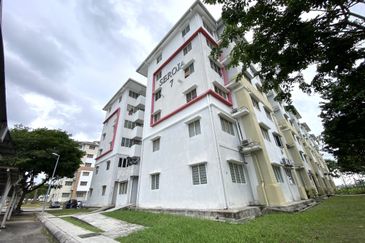
Pangsapuri Seroja
Setia Alam/Alam Nusantara, Selangor
RM 220,000
3 beds |
2 bath |
650 sqft
SALE
FEATURED
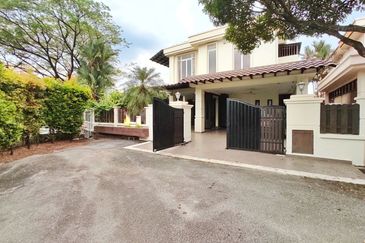
Persiaran Damansara Indah
Tropicana, Selangor
RM 3,800,000
6 beds |
6 bath |
6500 sqft
SALE
FEATURED
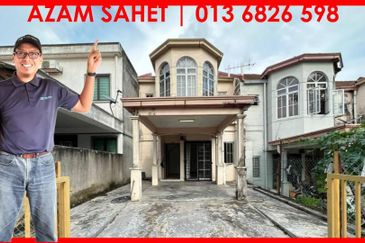
Bandar Puncak Alam
Bandar Puncak Alam, Selangor
RM 395,000
4 beds |
3 bath |
1200 sqft
RENT
FEATURED
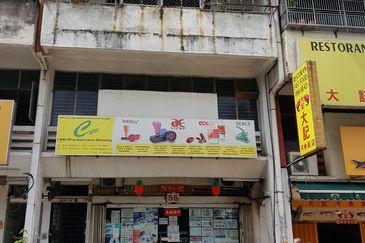
Bandar Baru Sri Petaling
Bandar Baru Sri Petaling, Kuala Lumpur
RM 4,000
- beds |
2 bath |
2000 sqft
SALE
FEATURED
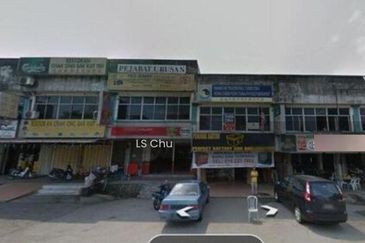
Belmas Johan Industrial Park
Rawang, Selangor
RM 1,100,000
- beds |
- bath |
2700 sqft


